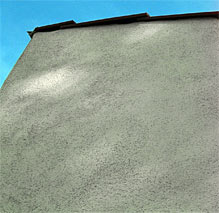 When cracks appear in walls, it is often a sign of foundation problems or damage. Many times the problem is caused by foundation shrinkage, soil expansion or settlement. Earthquakes can cause cracking as well. Where the crack is occurring, its size and shape can tell you a lot about the problem. Knowing how to “read” them can help you determine the seriousness of the situation and what action to take.
When cracks appear in walls, it is often a sign of foundation problems or damage. Many times the problem is caused by foundation shrinkage, soil expansion or settlement. Earthquakes can cause cracking as well. Where the crack is occurring, its size and shape can tell you a lot about the problem. Knowing how to “read” them can help you determine the seriousness of the situation and what action to take.It is not uncommon to find minor cracking in concrete foundations, possibly indicating a need for concrete foundation repair. This is because concrete shrinks as it cures. Curing is not just the result of water loss, it is also a chemical reaction. The amount of shrinkage that will occur depends on many factors, such as the type of concrete that was used, the temperature at the time of the pour and how much water was used.
These are usually thin, vertical cracks that appear randomly throughout the foundation. They can range in length from a couple of inches to the entire height of the wall. If the concrete was incorrectly or poorly mixed, the cracks will tend to be larger. The degree and characteristics of the cracking can also be influenced by the use (or lack) of steel reinforcements. Shrinkage cracking will typically stop once the concrete has been cured.
Foundation cracks occurring in an older building should be of more concern. In particular, be on the lookout for vertical wall cracks that become noticeably larger in a short period of time. Although the cracking may be the result of settlement, it can also be an indicator of more serious foundation problems. Cracks that are wider at the top than bottom can be dangerous as well, especially if you find them near the ends of a brick wall.
Generally, wall cracks that have a wider bottom than top are caused by settlement. If there is too much settlement, there may be underlying foundation issues that need to be addressed. Contact a seasoned foundation contractor if you have concerns about this kind of cracking, especially if they are appearing in a brick wall, to see if home foundation repair is needed.
Take note of any cracks that have a step-like pattern. These types of cracks can be caused by foundation settlement, as well as expanding and contracting soil or landscaping too close to the building.
Other causes of this kind of cracking can include:
Omitted footings
Frost heave
Shallow footings
Water problems
An inadequate backfill
Step cracks can often be seen outside as well as inside your home. You will want to have any cracks with this pattern inspected by a foundation repair (Los Angeles) expert.
Horizontal cracks in walls are often the most serious type of cracking. In most cases they can only be seen in crawl areas or a basement. Sometimes the cause of this type of cracking is expansive soil or improper backfilling. Either way, if you find horizontal cracks in either of those areas, immediately contact a foundation contractor, especially if the cracks are increasing in size over time.
Shawn Kyles, expert in Los Angeles foundation inspection, repair & house bolting at Julian Construction (http://www.julianconstruction.com) in Los Angeles, has inspected over 15,000 structures for building & safety (http://julianconstruction.com/about/ ). See their video: https://www.youtube.com/watch?v=6I8j7dXzpj4